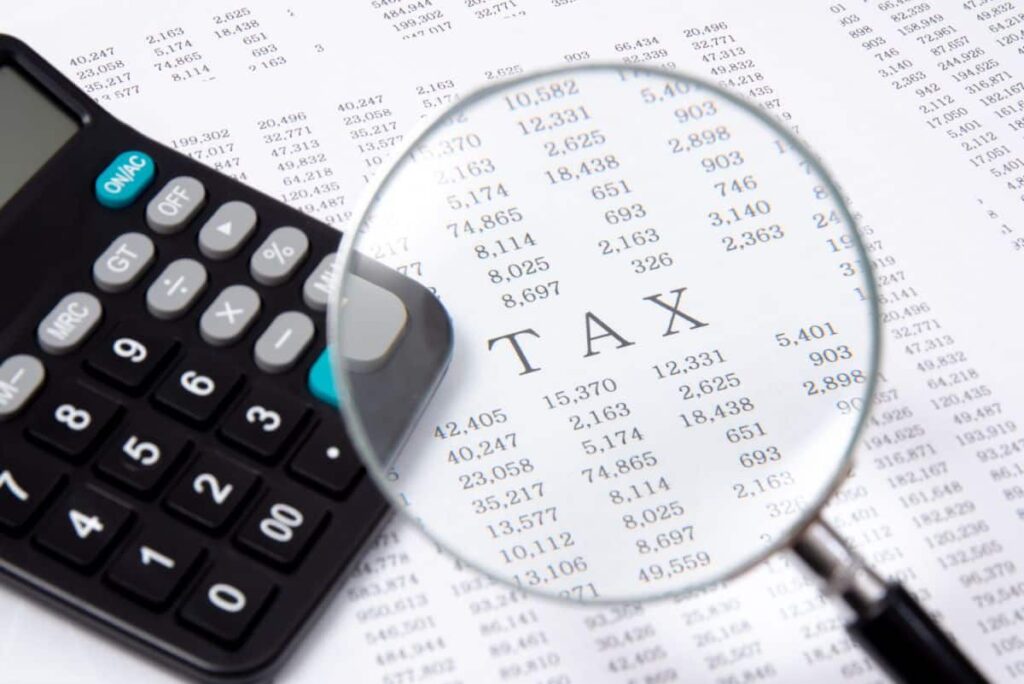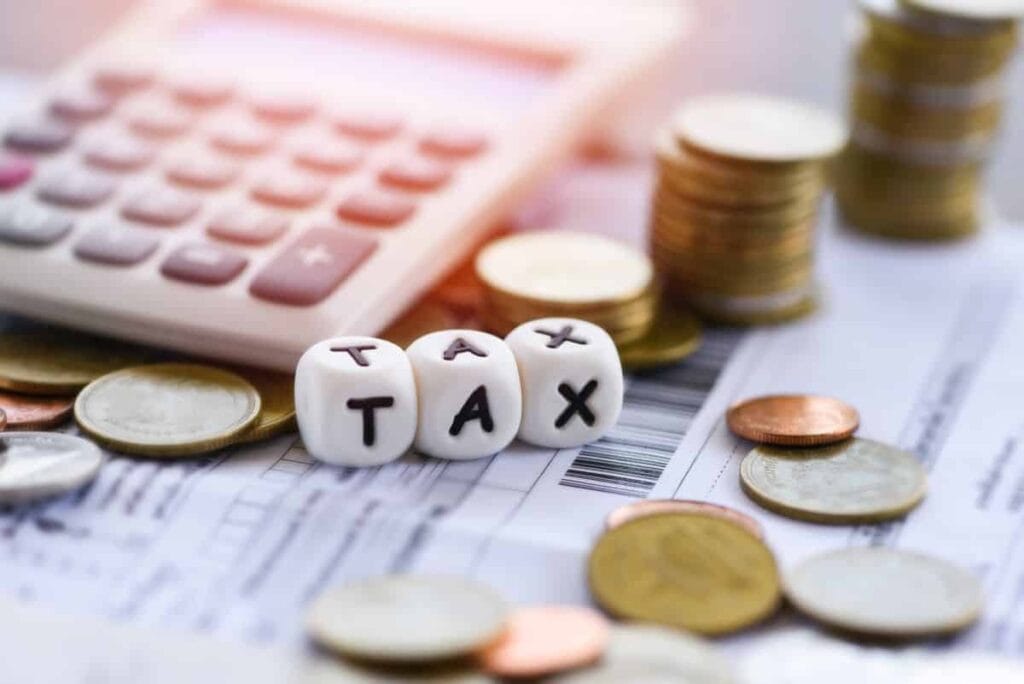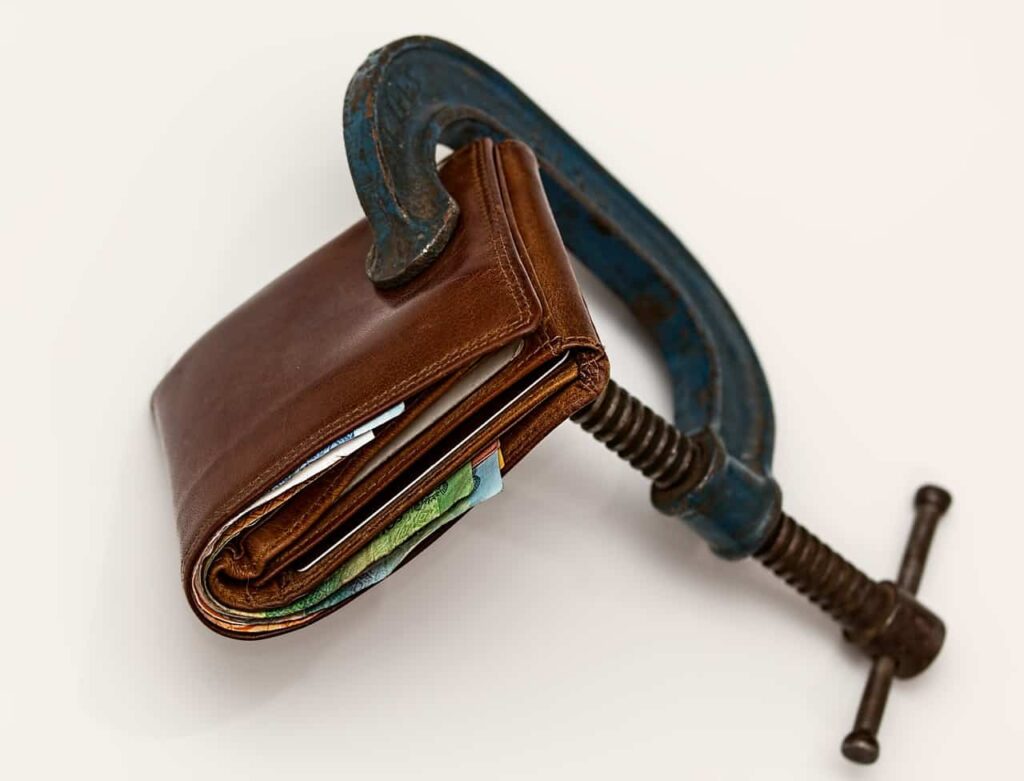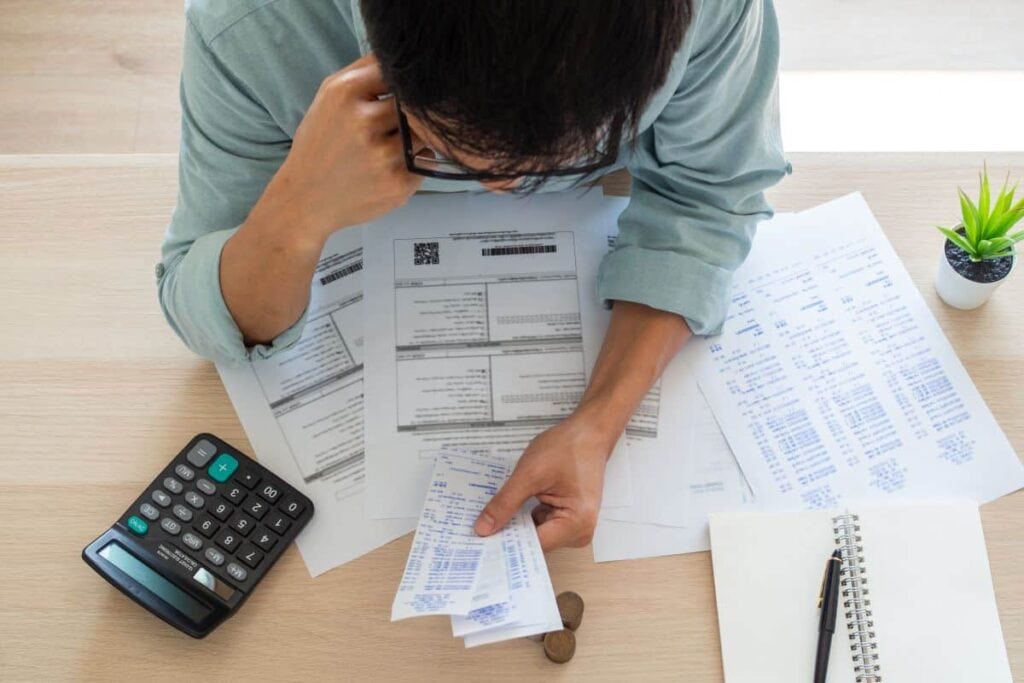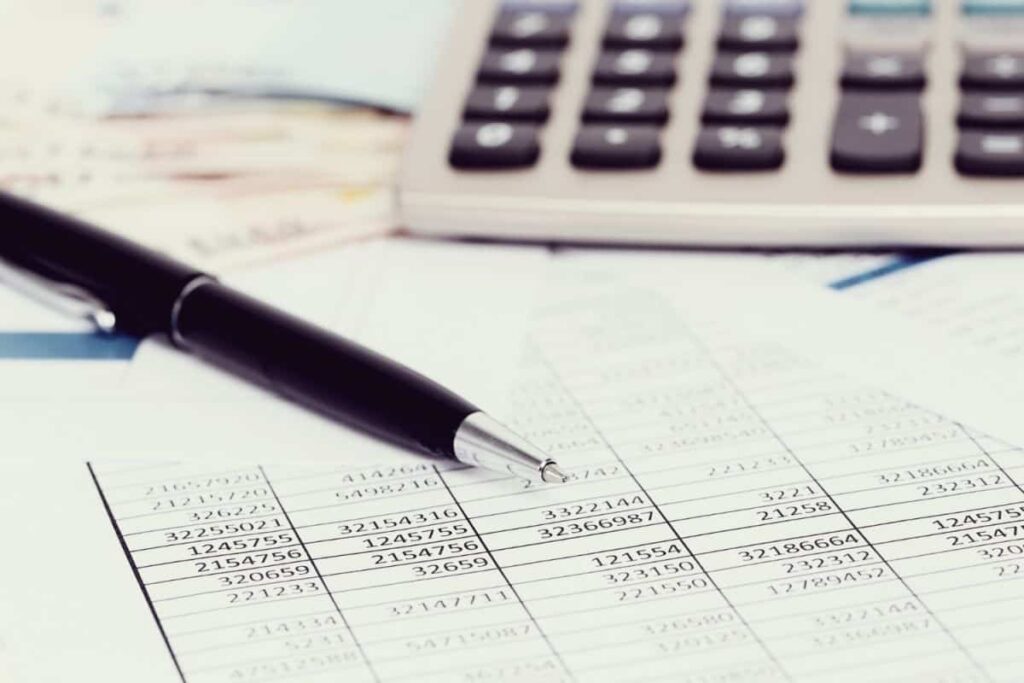Tips On How To Avoid Paying Excess Contributions Tax
Dealing with the excess contributions tax is a pain in the neck, but regrettably, it’s something that a significant number of taxpayers are required to pay on a yearly basis. Continue reading for some suggestions on how to evade having to pay this tax if that is something you would like to do. If you make sure to follow these easy procedures, you won’t have to worry about owing any additional money to the government at the end of the year.
The tax on excess donations can be a significant source of headaches. If you contribute more money to your RRSP than you are permitted to, the government will deduct a portion of your hard-earned money from your account as a penalty. Thankfully, there are techniques to keep yourself from making such an expensive error.
Figuring out how much money you are permitted to put into your retirement account each year can be difficult, and if you contribute more money than you are allowed to, you run the risk of being subject to a tax on your excess contributions. Continue reading if you wish to get information that can assist you in evading this tax. We will provide you with some useful guidance on how to prevent any undesired penalties by adhering to the limitations and remaining within the allowed range.
Excess Superannuation Contributions
In most cases, when an individual makes a concessional contribution into their superannuation, they are either eligible for a tax deduction (i.e. personal deductible contribution) or the pre-tax income is not taxed to them personally (such as in the case of salary sacrifice), but is instead taxed in the superannuation fund at a concessional rate. In other words, they get a tax break. The concessional contributions ceiling essentially places a restriction on the amount of pre-tax contributions that an individual is permitted to make to their superannuation fund.
When an individual has reached the limit of the concessional contributions they are allowed to make, the excess amount is added to their taxable income and taxed at the rate that corresponds to their marginal tax bracket.
The individual is eligible for a tax offset equal to 15 percent of the tax that was paid by the superannuation fund on the excess contribution that was made by the individual. This tax offset is not refundable.
The payment of the tax liability on excess contributions occurs later than it would have occurred if the member had not made an excess contribution and had instead paid PAYG tax on their income if they had breached their concessional contributions cap. This difference in timing is due to the fact that tax liabilities become payable at different times. People who exceed their concessional contributions cap may have some advantages as a result. Individuals who have excess concessional contributions in a specific financial year are subject to what is known as a “excess concessional contributions fee,” which is designed to cancel out the benefits of having these contributions. For further information, please refer to the section titled “Excess concessional contributions charge.”
Members have the option to have up to 85 percent of their excess contributions to their superannuation fund removed.
Charge Applied to Excess Concessional Contributions
A tax referred to as “excess concessional contributions” will be imposed in accordance with the new guidelines. This charge, which is essentially an interest charge, acknowledges the fact that a client who makes excess concessional contributions can prevent these amounts from being taken into account in accordance with the PAYG rules, and as a result, pay tax later than they otherwise would have been required to do so.
The charge:
- is due in proportion to the client’s income tax liability for the tax year that can be attributed to the client’s excess concessional contributions.
- is computed beginning on the first day of the fiscal year during which the excess contributions are paid and continuing until the day on which payment is expected to be made in accordance with the client’s first notice of assessment for that fiscal year.
- is computed and compounded on a daily basis at a rate that is equivalent to the RBA-published 90-day bank acceptable bill rate + 3 percent;
- becomes payable if the customer has reached the point where they are required to pay income tax that is attributable to the excess concessional contributions.
Example:
Joanne exceeded her concessional contribution cap by $10,000 in the 2019-20 financial year. As a result, she is on the marginal tax rate of 37% plus a 2% Medicare levy.
The excess concessional contribution charge is applied on the following tax liability: tax assessed on excess CC: $3,900 ($10,000 x 39%) less tax offset on excess: $1,500 ($10,000 x 15%).The ECC charge is applied on the amount of tax liability of $2,400. If the applicable Shortfall Interest Charge rate is 4.54%, this is equal to 0.01243836% per day.
The ECC charge would be (1.0001243836n – 1) x $2,400, where n is the number of days. For a period of 30 days, for example, the ECC charge of $2,400 would be approximately $8.97..
The ATO calculated the ECC charge and is paid from the start of the financial year until the first income tax assessment is due. The shortfall interest charge is then payable from that date until the date the extra income tax liability (as a result of the excess concessional contribution) is due.
Charges for interest on shortfalls
If a member has made an excessive amount of concessional contribution, their tax return can be modified to include the excessive amount of contribution if there was an excess (and applicable 15 percent tax offset). As a direct consequence of this, the amount of tax burden may grow. When the assessment is adjusted, the ATO adds interest to this shortfall amount for the time period between when it would have been initially payable and when the assessment is revised. This interest is calculated based on the difference between the two dates.
The ATO assesses a reduced rate of interest known as the shortfall interest charge since taxpayers are typically unaware of a shortfall amount until they receive an amended assessment (SIC). The SIC is thus owed from the date of the initial assessment of income tax until the day that the additional income tax liability (as a result of the excess concessional contribution) is required to be paid.
General interest charge
If an amount of ECC charge and shortfall interest charge is not paid after the time it is due, the individual will be responsible for paying the general interest charge (GIC) on the unpaid amount for each day in the period from when the amount was due until it is paid. This means that the individual will be liable to pay the GIC on the unpaid amount for each day in the period from when the amount was due until it is paid. For up-to-date information on GIC rates, see the ATO website. For purposes of comparison, the annual rate for GICs is 8.54 percent for the period of July to September which falls within the 2019-20 fiscal year.
The Management of Contributions in Excess of Concessional Limits
An individual who has reached their maximum level of concessional contributions will get a determination from the ATO that they have surpassed their maximum level of concessional contributions. Along with the determination, the ATO will also send the client a Notice of assessment or a Notice of modified assessment for their income tax return. This is to inform the individual that their excess amount has been included as income that is taxable in their tax return.
People need to make sure that the information on the determination is accurate before moving forward. Both the individual’s tax return and the information provided by the superannuation funds are taken into consideration when the ATO makes its findings and assessments. As a result, there is a chance that the donation was wrongly reported by the individual’s super fund. The super fund has the ability to re-report the donation to the ATO in the event that an error was made. On the other hand, a fund is not allowed to re-report donations if the only reason for doing so is to help a member avoid exceeding one or more contribution caps.
If there is no mistake in the finding that the ATO made regarding excess concessional contributions, the individual is responsible for paying the tax amount that is outlined in the determination using their own personal funds. They do, however, have the option to choose to release up to 85 percent of the excess amount that is held in their superannuation fund in order to pay the tax. This option is available to them. It is essential to keep in mind that an individual’s non-concessional contribution cap might be affected by excess concessional contributions (except the grossed-up amount of those that are released).
Electing to release excess concessional contributions

A person has the option to have up to 85 percent of any excess concessional contributions made after July 1, 2013, withdrawn from their super fund. This option is available to individuals. This may be required, for instance, to make it possible for the individual to have sufficient funds at their disposal to pay income tax on any extra concessional payments they have made.
An individual has sixty days from the day an excess concessional contributions determination or an amended determination is issued to make such an election to the ATO through their MyGov account. The request needs to state a legitimate release amount (up to 85 percent of the excess concessional contributions amount), and it also needs to identify the superannuation interests from which the money is going to be taken out. An individual is unable to change their mind after making the decision to release excess concessional contributions once that decision has been made.
After a person has cast their vote, the ATO will send a release authority to the member’s super fund in order to process the election. The superannuation provider has 10 business days from the date on which the release authority was issued to release this amount to the ATO unless the ATO has permitted for a greater length of time.
When an individual’s excess concessional contributions are reported to the ATO, the contributions are used to offset the individual’s overall tax burden. It is reimbursed to the individual to the degree that the sum that was released is greater than the individual’s liabilities. If there is an undue delay between the ATO receiving the released amount and the payment of any refund to the individual, the individual may be entitled to the payment of interest, which would be added to the amount refunded to them.
Exceeding Your Concessional (Before-Tax) Contributions Cap
It is essential to keep track of your annual concessional contributions, which consist of the following:
- Superannuation Guarantee (SG) contributions;
- Recognize and reward contributions;
- Contributions made by the employer in addition;
- Payments made out of reduced salaries;
- Donations made out of pocket that can be used to reduce your taxable income;
- Funds contributed to the First Home Super Saver Scheme (if made as concessional contributions).
It is crucial that you keep track of the number of donations as well as the date on which your super fund received them. Doing so will assist you in preventing an overage of contributions, which could result in increased tax liability for you.
It is not the responsibility of either your super fund or the ATO to maintain track of all of the payments that have been placed into your super account by either you or your employer. This responsibility lies solely with you.
Case study
Alex is paid his salary every two weeks, but his employer is not required to make SG contributions for the April to June quarter (ending 30 June) into his super account until 28 July, which is in the following financial year. This means that Alex will not receive those contributions until the following year. This is also the case with payments made in exchange for salary sacrifice, provided that your salary-sacrifice agreement does not specify when the payments would be made.
Alex contributes $150 out of each of his paychecks directly into his retirement account every two weeks. This sum of money, along with the applicable payment for SG, is set aside by his employer, and on the 30th of June in 2021, a check will be mailed to the super fund. On July 2, 2021, it is delivered to the retirement savings account.
Even though the SG and salary-sacrifice amounts pertain to Alex’s income for the period beginning on April 1, 2021, and ending on June 30, 2021, respectively, these contributions will be considered toward Alex’s concessional (before-tax) contributions ceiling for the next financial year (2021–22). In the event that Alex is ignorant of this and makes additional contributions to his employer-sponsored retirement plan in the year that follows, he may unknowingly go over the limit for those contributions.
What Are My Next Steps Now That I Have Reached My Concessional Cap?
If you go over your concessional contributions cap, the excess amount that you contributed is included in the amount of assessable income that you report on your tax return, and you pay tax on it at the rate that applies to your highest marginal tax bracket. This is the simple answer.
You have the option of taking up to 85 percent of your excess concessional contributions out of your superannuation account in order to help pay the tax, or you can choose to let the excess contribution remain in your account and pay the income tax bill with money that is not part of your superannuation. If you keep the extra contributions in your super account, they will be counted toward your yearly non-concessional contributions cap. This is the case whether or not you choose to withdraw them.
When you have to pay tax because you have exceeded your concessional contributions cap, the ATO will provide you with a tax offset since it will recognize that you have already paid 15 percent tax on the contributions and will therefore refund you that amount.
An excess concessional contributions (ECC) determination will be provided to you by the ATO, and you will also be given advice regarding the next steps you should take. A Notice of Assessment for your income tax will also be sent to you.
Important information: The regulations in relation to excess concessional contributions were altered as a result of the Treasury Laws Amendment (More Flexible Superannuation) Act 2021. You will continue to receive an ECC determination after the 1st of July 2021; however, you will no longer be required to pay the Excess Concessional Contributions (ECC) charge that was imposed by the ATO because you exceeded your contributions cap.
Exceeding Your Non-Concessional (After-Tax) Contribution Cap
You also need to keep an eye on the annual amount that is contributed to non-concessional accounts. Your total non-concessional contributions to all of your super accounts are taken into consideration for determining whether or not you have reached the annual cap. These contributions include:
- Personal non-concessional contributions;
- the contributions that your partner provides to your retirement savings plan;
- excess concessional contributions (contributions made before taxes) that you have not chosen to withdraw from your superannuation fund;
- You can cash out some of your retirement benefits and put the money back into your super account (re-contribution strategy).
Important information: Beginning on July 1, 2021, your non-concessional cap for a financial year will be eliminated if you have a Total Super Balance of $1.7 million or more as of June 30 of the preceding financial year. This change will take effect for all subsequent financial years. (The TSB maximum was $1.6 million from July 1, 2017, all the way through June 30, 2021.)
You will be regarded as having excess non-concessional contributions if you make any non-concessional contributions during a financial year while your total superannuation balance (TSB) is greater than $1.7 million.
The Treasury Laws Amendment (More Flexible Superannuation) Act 2021 includes provisions that allow people who withdrew amounts from their super account in accordance with the COVID-19 super early release scheme to recontribute this money as non-concessional contributions. This is important information to be aware of. These contributions will not be included in your annual non-concessional contribution caps beginning on July 1, 2021, and continuing through June 30, 2030.
These contributions are not eligible to be claimed as a personal deduction against super, and their total value cannot exceed the total amount of super that was withdrawn from your super account.
What Are My Next Steps Now That I Have Reached My Non-Concessional Cap?
If you contribute more money to your superannuation account than the non-concessional ceiling allows, you have the option of taking the extra money out or keeping it in your account.
When you withdraw the excess amount, you will not be subject to any additional taxes on the donation.
You will be obliged to pay additional tax on the sums that are above your contributions cap if you do not withdraw the excess non-concessional contributions from your super account.
Imagine that you have already reached the limit on your non-deductible contributions. If this is the case, the ATO will send you what’s called an excess non-concessional contribution (ENCC) determination, in which it will lay out your alternatives, explain them, and ask you to make a decision (which you cannot alter after it is made).
You are not allowed to make a request to your super fund to release a sum that is related to going over your limit, and you are required to wait until the ATO delivers you an ENCC determination before making any moves.
You are required to file a tax return for the financial year in which you exceeded the limit on the amount of non-concessional contributions that you could make. You are required to make a request for a lodgment deferment if you are unable to submit your tax return by the deadline and if you do not want the ATO to issue an ENCC determination before you submit your return.
Following the issuance of the determination, you will have sixty days from the date on which the ATO’s ENCC determination was issued to select one of the two options that are listed below:
Alternative 1
Withdraw the entirety of the extra non-concessional contributions as well as 85 percent of the revenues that were related to these contributions.
Your marginal tax rate is applied to the associated earnings, but you are eligible for a tax offset equal to 15 percent of that rate because your super fund has already paid tax on those earnings.
When the associated earnings amount is included in your assessable income, it has the potential to have an effect on the government benefits you currently receive. These benefits include Centrelink, the Medicare levy surcharge, the Division 293 tax, child support, and eligibility for PAYG instalments.
Alternative 2
You should keep any surplus non-concessional contributions and earnings from associate jobs in your superannuation account.
If you opt to keep the excess contributions in your account, you will be subject to additional taxation on these sums at the highest marginal tax rate (even if your own marginal tax rate is lower), and you will have 21 days to pay this additional tax. Because non-concessional donations are made with money that has already been taxed, this means that you are subject to a second tax on the money.

To pay this tax from your super, the ATO will issue a release authority to your super fund, allowing them to withdraw the necessary funds.
Note that you are required to pick this option if the only retirement savings account you have is with a defined benefit super fund. This indicates that you will be responsible for paying the tax out of your own personal funds.
Important information: If you do not choose any of the two alternatives within the allotted time frame of sixty days, the Australian Taxation Office (ATO) will select Option 1 for you automatically and remove any excess non-concessional contributions from your superannuation account.
Excess Cc Charge
Case Study
- Greg has reached the age of 54 and is liable to a tax rate that is 34.5 percent marginal (including the Medicare levy).
- Greg’s only interest in a superannuation vehicle is in the form of a self-managed superannuation fund (SMSF). At the end of the month of June 2019, his total superannuation balance (TSB) was $1.8 million.
- During the 2019-20 fiscal year, Greg’s SMSF received combined contributions (CCs) of $30,000 in the form of super guarantee (SG) and personal deductible contributions.
- For the 2019-20 school year, Greg’s CCs ceiling was set at $25,000, giving him an excess CCs balance of $5,000.
As part of the SMSF’s annual return for the 2019-20 financial year, the total CCs amount of $30,000 is declared to the ATO. - Greg will receive a notice of assessment with a payment due date of 21 September 2020 once he files his personal income tax return for the 2019-20 tax year on the 31st of August 2020.
- However, the ATO has determined that Greg has gone $5,000 above his credit card limit for the 2019-20 fiscal year. Accordingly, it will provide Greg with an excess CCs finding as well as a revised notice of assessment on November 1, 2020, with the payment being due on December 21, 2020.
- When an individual has their tax payable increased due to having their excess CCs included in their assessable income, they will also have to pay an excess CC charge (essentially an interest charge) that applies to the extra tax liability.
When the amount of tax that is owed by an individual goes up as a result of their excess credit card debt being counted toward their taxable income, that individual will also be required to pay an excess credit card charge, which is essentially an interest charge that is applied to the additional tax liability.
The excess CC charge:
- applicable beginning on July 1 of the year following the year in which the individual made the excess contribution and continuing until the day before the individual is required to pay their income tax amount as outlined in their first assessment notice for that income year.
- The Australian Taxation Office is the one responsible for calculating it, and it is compounded daily at a rate that is equal to the 90-day bank acceptable bill (as announced by the Reserve Bank of Australia) plus a 3 percent uplift factor.
- is included (together with the time period and the rate of the excess CCs charge) in the determination regarding excess CCs that the individual obtained from the ATO.
- is not an item that can be deducted, and the ATO does not have the authority to remit it even if it wanted to.
In continuation with the prior example involving Greg, the excess CC charge will be applied to the amount of $975 that he owes in additional taxes (and not the full amount of $5,000 in excess CCs) between July 1, 2019, and September 20, 2020. (being the day before tax under his first notice of assessment is due to be paid).
Charges for Interest on Shortfall
The shortfall interest charge (SIC), which applies to the difference between the amount of tax an individual paid initially and the amount of extra tax identified in their amended tax return, may also cause an individual’s tax liability to increase. This charge is applied when there is a gap between the amount of tax an individual paid initially and the amount of extra tax identified in their amended tax return (which includes the excess CCs and applicable 15 percent tax offset).
There is no difference between the SIC rates and the excess CC charge. In a manner analogous to that of the excess CC charge, the ATO computes and compounds the SIC on a daily basis. The SIC is applied to the shortfall amount from the time the initial tax liability was payable until the day before the extra tax liability related to the amended assessment for the excess CCs is due. This time period begins when the original tax liability was payable and ends on the day before the extra tax liability is due. The total amount of the additional tax that must be paid as a result of excess CCs, in addition to the amount of the charge for excess CCs, is subject to the SIC.
In the case of Greg, Greg may be required to pay the SIC on the additional income tax due of $975, in addition to the amount of the excess CC charge. In accordance with the terms of his initial notice of assessment, Greg’s SIC will take effect on 21 September 2020 and will remain in effect until 20 December 2020. (the day before the payment due date on his amended assessment).
It would appear that a significant number of taxpayers are ignorant of the SIC until the ATO sends them a revised assessment.
General Interest Charge
Imagine that beyond the due date, a certain sum of the excess CC charge and the SIC had not been paid. In that scenario, the person may be held responsible for paying the general interest charge (GIC) on the unpaid amount from the day that the amount was due to be paid until the day that it is paid. This period of time begins on the day that the amount was due to be paid.
In the case of Greg, if the amount of the excess CC charge or the SIC is not paid by the 21st of December 2020 (the payment due date on his amended assessment), Greg will also be liable to pay the GIC on any unpaid excess CC charge or SIC. This obligation will arise in the event that the payment due date on his amended assessment is the 21st of December 2020.
When compared to the SIC, the interest rate used to determine the value of a GIC is higher. In most cases, an individual is eligible to claim a tax deduction for both the SIC and the GIC in the same income year that they were incurred, which is not the case with the excess CC charge. In addition, the ATO has the authority to use its discretion to remit SIC and GIC payments in their entirety or in part in circumstances where it would be reasonable to do so (see PS LA 2006/8).





